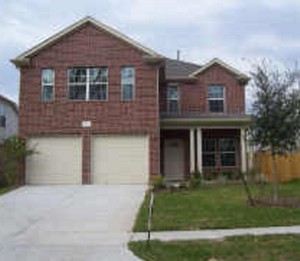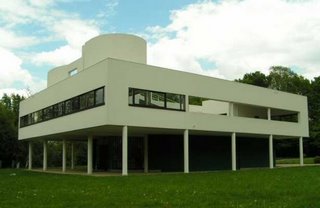Dwelling on a dwelling
 Typical suburban home (right)
Typical suburban home (right)
Le Corbusier's Villa Savoye (left)
Ares: “We need a house.”
Me: “I don’t want a house.”
Ares: “Why?”
Me: “Looking for a house is depressing. I refuse to spend my time sifting through the meaningless piles of drywall, stucco, and shingles bonded together thoughtlessly, to try to find the one dwelling that successfully marries practicality with aesthetics. I refuse to admit ownership of something I don't like”
Ares: (Confused) “What?!”
Me: “There’s just nothing out there that I like.”
Ares: “Want to look at new construction? We can always build one.”
Me: “No… unless you’re growing money in the patio.”
That conversation lead me to this argument: is good design reserved only for an elite group with keen eyes and deep pockets? You know the type, the ones whose black Barcelona chairs and Corbusier table welcome you to their Rietveld-inspired home. A Tolomeo lamp hovering over a Noguchi, a Pollock hanging alongside a Kandinsky, while a Neo-classical composer takes a stab at Mozart on the Bang & Olufsen. There’s meaning in every piece, a thought process that solidified from abstract to reality. No need for ornamentation, just the obvious representation of an idea; a less is more kind of approach.
The notion that those with buying power can achieve more with their currency is not new. For years, those of us who lack such financial muscle have been subjected to the grotesque monsters concocted by the minds of developers and builders who have their own economic hunger to feed. Remember Levittown? If you’re not convinced, then please take a drive to suburban Houston –or really, anywhere else in suburban America- and see what $200k buys you: a box, piled among a sea of other colossal boxes, in neighborhoods ruled by dictatorships under the aliases of ‘Homeowners Association’. The formula is always the same: a two-car garage right smack in front of the house, a dead tree planted right in the middle of the front lawn, a concrete path leading to the leaded-glass front door, manicured patches of grass and soil bearing the sign ‘Lawn-of-the-month’. You’ll get walls covered in flowers, floors that look like wood and feel like plastic, plantation shutters that don’t shut, arches, cubby-holes and other left-over spaces labeled ‘computer desk area’, beige carpet, molding, chair rails, and brass lighting fixtures -right out of a Home Depot catalog- burning 15 bulbs at a time. It’s a scene that will repeat itself just 50 feet down the road: brick, mortar and siding clumped carelessly, implanted on patches of land, hundreds to an acre.
What won’t your well-earned money get you? Forethought, quality, individuality…a unique world that enhances your everyday living experience. Nowhere has the time been taken to create a dialogue between site and building, to eliminate clutter, to bring forth that which enriches our living experience, not just ornament it. Why? Because time is money for those who exercise the right to decide the direction in which our built environment will derail. Whatever happened to Le Corbusier’s discourses on the house as a machine for living? What about Phillip Johnson and his minimalist and functional Glass House? Where is Frank Ghery and his theories on the use of ordinary (read: inexpensive) materials to create beautiful (read: comfortable) spaces for living? Where in suburban America? Nowhere! It’s cookie-cutter at its best. Hence the thought persists, is the question here really about money, or are we just plain lazy? Who then, will prevent new neighborhoods from becoming virtual Candy Lands?
Definitely not these people!

